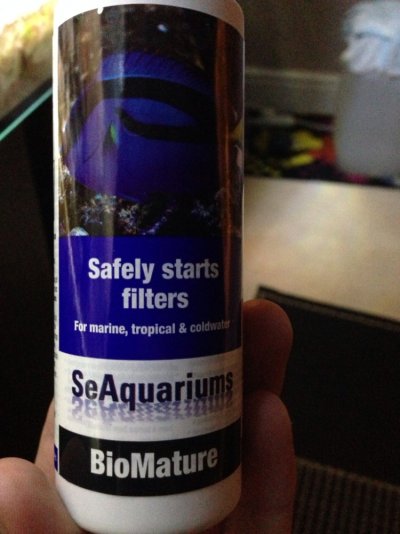I completely disagree, for the record. If these statements are true, what you people are saying is that you cannot have beneficial bacteria without live rock.
I don't think anyone is stating that at all, only that introducing some already cultured material speeds up the process
The term "seeding" is applicable and appropriate for both situations.
True using all dry rock will also ultimatly yield "live" rock as far as BB is concerned with less risk of introducing unwanted animals.
I can fully understand why doing this may be preferable in some circumstances.
But it is also true that "seeding" it with BB from a safe source will greatly decrease the length of time before the system can support the desired bio-load.
As I stated earlier, when you start from scratch with all dry/clean rock and sand, than you are technically "cycling" the tank, as it needs to proceed through the various stages or
cycles until a good colony of BB is established and it usually takes 8-12 weeks if you also consider the de-nitrifying bacteria as well.
When you introduce BB via "live" rock, filter media, etc. you are not "cycling" the tank but rather "seeding" it with BB and hoping for a good colonization. The system does not go through a cycling phase, but rather a lag phase which is until the seeded BB can colonize the "clean" material to a point of being able to handle the bio-load.
If you test it, you will see that when starting with all clean material, you see a clear progression from ammonia>nitrite>nitrate.
When seeding with BB you do not see that progression, but rather will see signs of all types of BB working concurrently as they were all introduced at the same time. It is also cause to be more diligent about testing if livestock is present during this "BB colonization phase" as the water quality may hit spikes in all parameters concurrently.
I have done both and have very plainly seen this difference as well as the greatly decreased time frame before said system can adequately support the desired bio-load.
That has been an accepted idea/practice for as long as I can remember.
We used to routinely give customers a few pounds of sand from active, healthy tanks whenever they were setting up a new tank, and that was 35 years ago.
Now introducing live rock that is actually harboring critters, algae, sponges, etc. is also considered "seeding", but this time you are seeding your tank with different organisms.
Some prefer starting with a clean slate, some prefer to muddy the water a little, both approaches will yield the desired result and both are tried and true methods.
I honestly don't know why this has even become an issue, it is common sense and simple science after all.
are we going to debate about how to pronounce "tomato" next?






